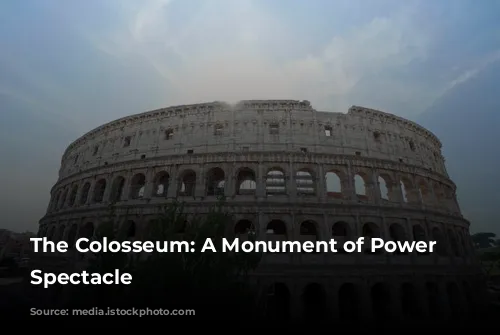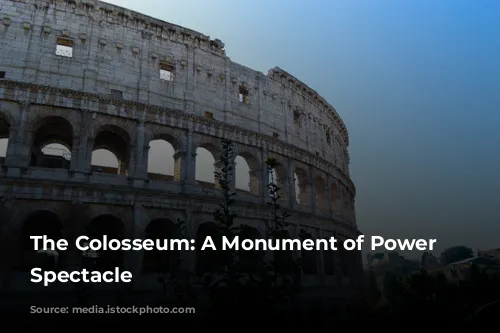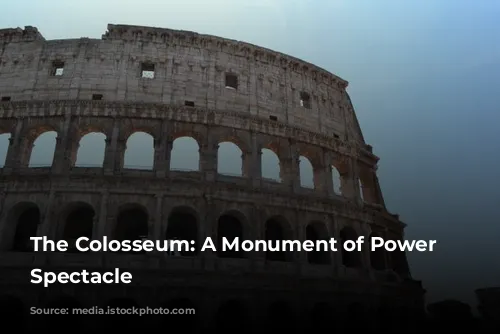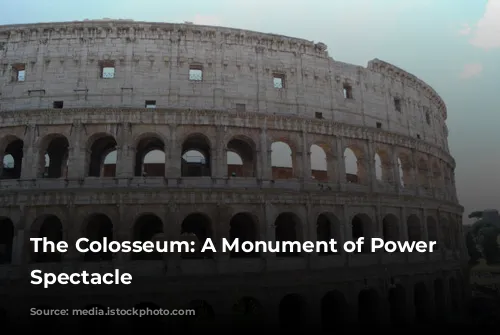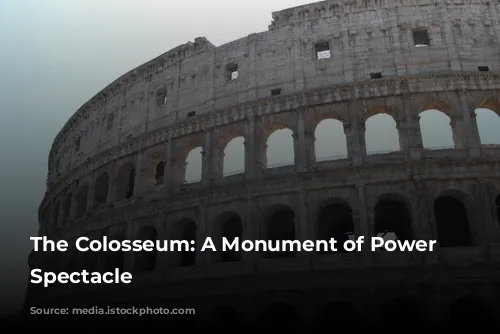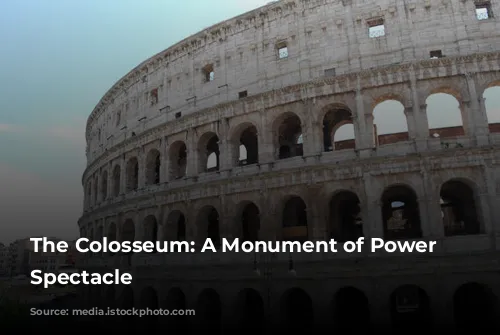The Colosseum, a name synonymous with ancient Rome, stands as a testament to the grandeur and power of the Roman Empire. Originally known as the Flavian Amphitheatre, this colossal structure, built by the Flavian dynasty, was inaugurated by Emperor Titus in 80 AD.
The Colosseum’s Opening: A Spectacle of Extravagance
The opening ceremony was a spectacle of unprecedented scale, lasting for a staggering one hundred days. The Roman people witnessed breathtaking shows, gladiatorial contests, and hunts involving thousands of animals. One particularly memorable event was the “naumachia”, a simulated sea battle staged in the arena, transformed into a vast water basin.
The Colosseum’s Name: A Legacy of Prophecy
The name “Colosseum” emerged from the writings of the Venerable Bede, a medieval monk. His prophecy, linking the Colosseum’s fate to that of Rome and the world, cemented the name in the annals of history. The name might have been inspired by the nearby statue of the Emperor Nero, the “Colossus”, which stood 35 meters tall.
The Colosseum: A Masterpiece of Roman Engineering
The Colosseum, a marvel of Roman architectural ingenuity, was originally adorned with gleaming white travertine stone slabs. Its elliptical shape, designed to accommodate more spectators, was a testament to Roman engineering prowess. This majestic edifice was constructed with four levels, each adorned with a multitude of arches, the lower two levels featuring imposing statues.
A testament to Roman Skill: The Arch
The Romans were renowned for their mastery of the arch, a structural element that enabled them to distribute weight effectively. This architectural element was a cornerstone of Roman structures, evident in the iconic aqueducts.
The Colosseum’s Construction: A Monument to Perseverance
The Colosseum’s construction, completed within a decade, was a testament to the Romans’ unwavering commitment to their monumental projects. The building’s structure, reminiscent of aqueducts stacked upon one another, is a marvel of engineering and architecture.
The Colosseum’s Transformation and Enduring Legacy
Today, the Colosseum stands as a skeletal reminder of its former glory, with three-fifths of its outer wall missing. In the Middle Ages, its stone, lead, and iron were repurposed to construct prominent structures, including the Barberini Palace, Piazza Venezia, and even St. Peter’s Basilica.
The Colosseum’s Seating: A Reflection of Social Hierarchy
The Colosseum, a colossal structure that could accommodate up to 70,000 spectators, was a microcosm of Roman society. Its tiered seating, offering unobstructed views, was meticulously arranged according to social status. The lower tiers were reserved for the elite, while the upper tiers were for the common people.
A Sun-Protected Arena: The Ingenious Velarium
Similar to modern sports stadiums, the Colosseum offered protection from the sun thanks to its ingenious “Velarium”. This massive linen tarpaulin, suspended by ropes, winches, and poles, was maneuvered by a team of 100 sailors, moving in perfect synchrony to the rhythm of a drum.
The Colosseum’s Arena: A Stage for Spectacle and Symbolism
The Colosseum’s arena, once adorned with brick and wood, has now vanished, replaced by cellars housing equipment used for the games. These cellars housed lifts and hoists, used to raise animals and gladiators, creating spectacular surprise entrances for the audience.
The Colosseum’s Shows: Entertainment and Social Control
The shows staged in the Colosseum, ranging from gladiatorial contests to animal hunts, were more than just entertainment. They served as a means of connecting citizens to their leaders, fostering a sense of shared experience and providing a much-needed distraction from the complexities of Roman life.
The Colosseum’s Shows: A Tapestry of Spectacle and Cruelty
The Colosseum played host to a variety of spectacles, from the “Venationes”, involving animal fights, to the “Silvae”, where elaborate scenery recreated forests teeming with animals. The arena also saw the tragic spectacle of public executions, where individuals were pitted against ferocious beasts.
The Colosseum’s Most Popular Spectacle: The Gladiators
The gladiators, the epitome of Roman spectacle, captivated the audience with their skill and courage. These skilled warriors, who entered the arena through a passageway connected to their barracks, the Ludus Magnus, were greeted by enthusiastic fans.
Gladiators: Warriors of the Arena
Gladiators, a diverse group of individuals, were often prisoners of war, paupers seeking fame, or former slaves seeking freedom. Their profession, fraught with danger, offered fame, fortune, and even popularity with women.
The Gladiator’s Fate: A Matter of Life and Death
The gladiatorial contests were fierce and often deadly. A defeated gladiator could plead for mercy, his fate decided by the emperor’s thumbs-up or thumbs-down gesture. The victorious gladiators were rewarded with riches and prestige.
The Colosseum: A Symbol of Roman Brutality
The Colosseum’s spectacles, while captivating to the Romans, are viewed as shockingly cruel by modern standards. The smell of blood, burnt flesh, and wild animals permeated the arena, creating a sensory experience both exhilarating and disturbing.
The Colosseum’s Enduring Legacy: A Monument of Transformation
After the decline of the Roman Empire, the Colosseum fell into disuse, its walls providing shelter for various communities. The Colosseum, once a symbol of imperial power, transformed into a refuge for hermits, a hospital, and even a cemetery.
The Colosseum: A Symbol of Hope and Redemption
In the Middle Ages, the Colosseum was declared a sacred monument dedicated to the Passion of Christ. This symbolic act, intended to protect the Colosseum from further destruction, has made it a place of pilgrimage for Christians.
The Colosseum: A Timeless Treasure
The Colosseum, a monument to Roman power and spectacle, continues to captivate the world. Its grandeur, its stories, and its enduring legacy stand as a testament to the enduring power of human ingenuity and the enduring fascination with the ancient world.
